 Important Documents For Admission (2025 - 2026)
Important Documents For Admission (2025 - 2026)
| Degree Awarded | Discipline | Duration | Entry Level | Seats in IIST |
| B.Tech | ECE | 4 years | 10+2 (PCM) | 60 |
| (M. Tech) -Branch | Digital Communication | 2 years | BE or B.Tech | 09 |
The Department of Electronics & Communication Engineering was established in the year 2003 with B.E. (ECE) with an intake of 60 students. It is amongst very few ECE Departments in Engineering Colleges of Central India that has been accredited twice by the National Board of Accreditation (NBA) in 2013 & 2016. The ECE department offers PG program in M.E. (Digital Communication) since the year 2009-10. There has been consistent development in all the spheres including infrastructure, staff and student strength. Well-equipped laboratories with high-end computers, high-speed internet (Broadband and Wi-Fi) facility and well-qualified staff members ensure excellent standards of education delivered by the department. Electronics & Communication Engineering (ECE) is a dynamic and exciting area that provides excellent career opportunities in various sectors of the society. We are committed to give our students an environment where they develop their critical thinking and problem-solving skills as they advance through the program.
Evolve Better– Enhancing Employability Quotient along with Holistic Development.
To produce globally competent electronics & communication engineering students with knowledge of core as well as inter-discipline domains.
To create the ability to demonstrate technical competence in the fields of electronics and communication engineering and to develop solutions to the problems in core as well as inter disciplinary areas.
To develop graduates with sound academic background and industrial exposure this gives them capability to make a productive contribution to society through lifelong learning.
To develop competent professionals with moral values, ethics to build an efficient team with soft skill capabilities
The ability to analyze, design, and implement an application-specific electronic system for complex engineering problems for analog, digital domain, communications and signal processing applications by applying the knowledge of basic sciences, engineering mathematics, and engineering fundamentals.
The ability to adapt to rapid changes in tools and technology with an understanding of societal and ecological issues relevant to professional engineering practice through life-long learning.
Excellent adaptability to function in the multi-disciplinary work environment, good interpersonal skills as a leader in a team in appreciation of professional ethics and societal responsibilities.
Upon successful completion of the programme, the students would have the following attributes.
| Semester | Subject Code | Subject Name | CO Code | Course Outcome |
| I | EC201 | Engineering Physics | CO201.1 | The Coursework is designed to provide students the opportunity to learn key concepts of Wave nature of particles and the Schrodinger equation. |
| CO201.2 | Student will able to understand the knowledge of Wave optics i.e. interference and diffraction. | |||
| CO201.3 | To introduce the idea of solids like semiconductors etc. | |||
| CO201.4 | To develop the understanding of Lasers, fiber optics and their applications in field of engineering sciences. | |||
| CO201.5 | To provide you to basic understanding of Electrostatics in vacuum. | |||
| BT102 | Mathematics-I | CO102.1 | To introduce the fallouts of Rolle’s Theorem that is fundamental to application of analysis to Engineering problems. | |
| CO102.2 | To introduce the idea of applying differential and integral calculus to notions of curvature and to improper integrals. Apart from some applications it gives a basic introduction on Beta and Gamma function | |||
| CO102.3 | To develop the tool of power series and Fourier series for learning advanced Engineering Mathematics. | |||
| CO102.4 | To familiarize the student with functions of several variables that is essential in most branches of engineering | |||
| CO102.5 | To develop the essential tool of matrices and linear algebra in a comprehensive manner. | |||
| BT203 | Basic Mechanical Engineering | CO203.1 | Understand the properties of material, stress strain. Properties of alloys and cast iron. | |
| CO203.2 | Understand the concept measurement and machine tools their operations and their applications. | |||
| CO203.3 | Understand the concept of fluid flow , properties of fluid, Bernoulli’s equation, Pascal’s law. | |||
| CO203.4 | To Understand the concept of heat and temperature, law of thermodynamics, boilers and their mountings and accessories, basic Refrigeration cycles and its applications. | |||
| CO203.5 | To Understand the working of different cycles and 4 strokes, 2 stroke engines and their applications. | |||
| BT204 | Basic Civil Engineering & Mechanics | CO204.1 | Students will acquire the basic knowledge in different fields of civil engineering and materials used in construction. | |
| CO204.2 | Gain the ability to use modern survey equipment to measure angles and distances. | |||
| CO204.3 | a. Students will understand the basic of contour lines and map | |||
| CO204.4 | Students will have the ability to identify, formulate and solve engineering problems related to Engineering Mechanics: Statics | |||
| CO204.5 | Students will be able to analyse beam for shear force and bending moment. | |||
| BT205 | Basic Computer Engineering | CO205.1 | Able to understand the basic applications of computers in various fields, describe operating system, its role and functionalities and to apply concepts of MS word, MS power point, MS Excel efficiently. | |
| CO205.2 | Discuss and apply simple algorithms for arithmetic and logical problems. | |||
| CO205.3 | Translate the algorithms to programs applying object-oriented concepts in C++ programming language. | |||
| CO205.4 | Understand basics of computer networks, OSI layers and protocols, E commerce applications, impact of securitythreats and attacks on networking systems and also security measures | |||
| CO205.5 | Understand the different method for representing and processing data and to get awareness about the impact of cloud computing, its various type of services. | |||
| BT206 | Language Lab and Seminars | CO206.1 | Learners to develop good listening skills. | |
| CO206.2 | Encourages learner to talk freely and lose their shyness when talking in front of the people | |||
| CO206.3 | To develop the overall personality of the students by the practical activities | |||
| II | BT101 | Engineering Chemistry | CO101.1 | Differentiate hard and soft water; solve the related numerical problems on water purification and its significance in industry and daily life. |
| CO101.2 | Select the lubricant for various purposes based on the type of Machines. |
|||
| CO101.3 | Equipped with basic knowledge of polymer , methods of polymerization and various industrial applications of polymers |
|||
| CO101.4 | Draw the Phase diagrams of one & two component systems and causes, consequences and methods to minimize corrosion to improve industrial designs. | |||
| CO101.5 | Identify the structure of unknown/new compounds with the help of spectroscopy and understand periodic properties such as ionization potential, oxidation states and electro negativity | |||
| BT202 | Mathematics-II | CO202.1 | To introduce effective mathematical tools for the solutions of ordinary and partial differential equations that model physical processes. | |
| CO202.2 | To introduce the tools of differentiation and integration of functions of complex variable those are used in various techniques dealing engineering problems. | |||
| CO202.3 | To acquaint the student with mathematical tools available in vector calculus needed various field of science and engineering. | |||
| BT103 | English for Communication | CO103.1 | Effective use of verbal and non-verbal communication for enhanced soft skill beside enhanced reading comprehension as well | |
| CO103.2 | Write the different kinds of letters, reports and technical writing. | |||
| CO103.3 | Apply basic rules of grammar in both written as well as oral communication. | |||
| BT104 | Basic Electrical and Electronics Engineering | CO104.1 | Understand and apply electrical laws and network theorems to analyze DC circuit | |
| CO104.2 | Analyze single-phase and three-phase AC circuits. | |||
| CO104.3 | Understand the principles and operation of magnetic circuits and single-phase transformers. Evaluate the performance of the transformer. | |||
| CO104.4 | Explain working principles of DC and AC machines and their applications | |||
| CO104.5 | Understand digital electronics and basic semiconductor devices including BJTs and logic circuits. | |||
| BT105 | Engineering Graphics | CO105.1 | Draw various types of scales, and curves. | |
| CO105.2 | Draw orthographic projections of points & lines | |||
| CO105.3 | Draw orthographic projections of Planes & Solids | |||
| CO105.4 | Draw sections and development of solids including cylinders, cones, prisms and pyramids. | |||
| CO105.5 | Draw isometric views of Planes and Solids, Drawing using AUTOCAD. | |||
| BT106 | Manufacturing Practices | CO106.1 | Use hand and power tools for different manufacturing processes | |
| CO106.2 | Operate machine tools while preparing any component | |||
| CO106.3 | Select the appropriate tools required for specific operation. | |||
| CO106.4 | Comprehend the safety measures required to be taken while using the tools. | |||
| CO106.5 | Prepare Foundry, Fitting, Carpentry, Welding and smithy Job. | |||
| III | BT301 | Mathematics-III | CO301.1 | Solve algebraic and transcendental equations using appropriate numerical methods such as Bisection, Newton-Raphson, and Regula-Falsi, and apply interpolation techniques to estimate intermediate values. |
| CO301.2 | Analyze and apply numerical methods for differentiation and integration, and solve systems of linear algebraic equations using direct and iterative techniques. | |||
| CO301.3 | Apply numerical techniques to solve ordinary and partial differential equations using methods such as Runge-Kutta, predictor-corrector, and finite difference schemes. | |||
| CO301.4 | Apply Laplace and Fourier transform techniques to solve ordinary differential equations and evaluate definite integrals in engineering problems. | |||
| CO301.5 | Understand and Apply discrete and continuous probability distributions to model and solve real-life engineering and scientific problems. | |||
| EC302 | Electronic Measurements and Instrumentation | CO302.1 | Understand the characteristics, errors, and calibration of instruments | |
| CO302.2 | Describe working of CRO and impedance measuring devices. | |||
| CO302.3 | Classify and apply transducers for measuring physical quantities. | |||
| CO303.4 | Explain signal generators and display systems. | |||
| CO303.5 | Implement DACs and ADCs and use digital instruments effectively. | |||
| EC303 | Digital System Design | CO303.1 | Apply Boolean laws and minimize logical expressions. | |
| CO303.2 | Design combinational logic circuits. | |||
| CO303.3 | Demonstrate sequential building blocks. | |||
| CO303.4 | Implement counters, shift registers, and sequence generators. | |||
| CO303.5 | Discuss logic families and programmable logic devices. | |||
| EC304 | Electronic Devices | CO304.1 | Interpret semiconductor material properties and special diodes. | |
| CO304.2 | Demonstrate diode, rectifiers, and voltage regulation circuits. | |||
| CO304.3 | Illustrate BJT biasing in circuits and amplifier configurations. | |||
| CO304.4 | Articulate small signal and large signal analysis of amplifiers. | |||
| CO304.5 | Analyze characteristics and applications of FET and MOSFET. | |||
| EC305 | Network Analysis | CO305.1 | Analyze electrical circuits with fundamental electrical Laws. | |
| CO305.2 | Apply concepts of graph theory at electric circuits. | |||
| CO305.3 | Illustrate various network theorems to electric circuits | |||
| CO305.4 | Formulate concept of transient responses using Laplace Transform techniques. | |||
| CO305.5 | Identify two-port networks and its parameters. | |||
| EC-306 | EMI Lab | |||
| CO306.2 | Describe working of CRO and impedance measuring devices. | |||
| CO306.3 | Classify and apply transducers for measuring physical quantities. | |||
| CO306.4 | Explain signal generators and display systems. | |||
| CO306.5 | Implement DACs and ADCs and use digital instruments effectively. | |||
| BT107 | Evaluation of Internship-I | CO107.1 | Understand technical basics through in-house training sessions. | |
| CO107.2 | Demonstrate teamwork and collaboration skills during training activities. | |||
| CO107.3 | Apply basic technical skills in practical tasks and exercises. | |||
| CO107.4 | Participate effectively in group tasks, workshops, and mini-projects. | |||
| IV | EC401 | Energy and Environmental Engineering | CO401.1 | Explain various energy sources and their role in sustainable development. |
| CO401.2 | Illustrate ecosystem structure, functions, and energy flow processes. | |||
| CO401.3 | Analyze threats to biodiversity and propose conservation strategies. | |||
| CO401.4 | Evaluate environmental pollution types and recommend control measures. | |||
| CO401.5 | Interpret environmental acts and assess their effectiveness. | |||
| CO401.6 | Apply field knowledge to document and study environmental assets and issues. | |||
| EC402 | Signals and Systems | CO402.1 | Classify various types of signals and systems, and perform basic signal operations. | |
| CO402.2 | Analyze Linear Time-Invariant (LTI) systems using convolution and impulse response properties. | |||
| CO402.3 | Apply z-transform techniques to analyze discrete-time signals and systems. | |||
| CO402.4 | Analyze discrete-time signals using Fourier series and Fourier transform. | |||
| CO402.5 | Explain the concept of state-space analysis, sampling theorem, spectra of sampled signals, and signal reconstruction. | |||
| EC403 | Analog Communication | CO403.1 | Explain the need for modulation and demodulation. | |
| CO403.2 | Analyze AM, FM and PM modulation and demodulation. | |||
| CO403.3 | Describe radio frequency receivers in analog Communication. | |||
| CO403.4 | Examine noise performance in communication systems. | |||
| CO403.5 | Evaluate performance of analog communication systems. | |||
| EC404 | Control Systems | CO404.1 | Understand basic concepts (transfer Function) and mathematical modeling of control systems. | |
| CO404.2 | Analyze time-domain responses and stability of linear systems. | |||
| CO404.3 | Apply stability criteria to control systems. | |||
| CO404.4 | Analyze control systems using compensators and various controllers. | |||
| CO404.5 | Apply state-space techniques for system modeling and analysis | |||
| EC405 | Analog Circuits | CO405.1 | Understand feedback in amplifiers and types of oscillators. | |
| CO405.2 | Analyze differential amplifier configurations and op-amp characteristics. | |||
| CO405.3 | Design op-amp-based circuits and filters. | |||
| CO405.4 | Apply OP-Amp principles in timer and waveform shaping circuits. | |||
| CO405.5 | Analyze voltage regulators and regulator ICs. | |||
| EC406 | Simulation Lab | CO406.1 | Simulate basic electronic circuits (rectifiers, clippers, clampers, diode/transistor characteristics) using circuit simulation software. | |
| CO406.2 | Perform transient and steady-state analysis of RL, RC, and RLC circuits and verify network theorems. | |||
| CO406.3 | Use virtual instruments (oscilloscope, function generator, multimeter) within the simulation environment to measure circuit parameters. | |||
| CO406.4 | Design, simulate, and optimize PCB layouts for basic circuits using PCB design software. | |||
| V | EC501 | Microprocessor and its Applications | CO501.1 | Explain the architecture, features, and timings of 8086 and advanced microprocessors. |
| CO501.2 | Write and execute assembly language programs for 8086. | |||
| CO501.3 | Interface and control peripheral devices using 8155/8255 and ADC/DAC. | |||
| CO501.4 | Analyze the functioning of programmable devices like timers, interrupt controllers, DMA controllers, and USARTs. | |||
| CO501.5 | Explain the architecture and functionalities of 8051 microcontroller and its applications in embedded systems. | |||
| EC502 | Digital Communication | CO502.1 | Explain sampling theorem, TDM, and various pulse modulation techniques. | |
| CO502.2 | Analyze PCM systems, quantization noise, companding, ISI, and different encoding techniques. | |||
| CO502.3 | Apply and Compare various bandpass digital modulation schemes like ASK, PSK, FSK, QAM. | |||
| CO502.4 | Compute probability of error for modulation schemes using matched filters and correlators. | |||
| CO502.5 | Explain the fundamentals of information theory and Design basic error control coding schemes. | |||
| EC503(A) | CNTL | CO503A.1 | Analyze two-port network parameters and matching networks. | |
| CO503A.2 | Analyze passive LC filters and their approximations. | |||
| CO503A.3 | Analyze network synthesis using positive real function methods. | |||
| CO503A.4 | Understand transmission line behavior and analyze waveform distortion and reflections. | |||
| CO503A.5 | Apply Smith chart techniques for impedance matching and analyze standing wave patterns. | |||
| EC504(A) | Electromagnetic Theory | CO504A.1 | Apply Coulomb’s law, Gauss’s law, and boundary conditions to calculate electric fields. | |
| CO504A.2 | Analyze steady magnetic fields and forces using Biot-Savart law and Ampere’s law. | |||
| CO504A.3 | Apply Maxwell’s equations to model time-varying fields. | |||
| CO504A.4 | Analyze electromagnetic wave propagation in free space and media. | |||
| CO504A.5 | Analyze wave reflection and transmission at normal and oblique incidences. | |||
| EC- 505 | CNTL Lab | CO505.1 | Analyze two-port network parameters and matching networks. | |
| CO505.2 | Analyze passive LC filters and their approximations. | |||
| CO505.3 | Analyze network synthesis using positive real function methods. | |||
| CO505.4 | Understand transmission line behavior and analyze waveform distortion and reflections. | |||
| CO505.5 | Apply Smith chart techniques for impedance matching and analyze standing wave patterns. | |||
| EC506 | MATLAB Programming Lab | CO506.1 | Write MATLAB programs using basic syntax, control structures, and functions. | |
| CO506.2 | Develop scripts for signal operations, plotting, and numerical computation. | |||
| CO506.3 | Simulate engineering problems involving signals, systems, and mathematical tools. | |||
| BT-407 | Evaluation of Internship-II | CO407.1 | Understand industrial practices and domain knowledge from expert sessions. | |
| CO407.2 | Apply industrial tools, techniques, or software demonstrated by experts. | |||
| CO407.3 | Develop solutions or models based on training tasks and industry-oriented projects. | |||
| CO407.4 | Participate actively in workshops, discussions, and problem-solving exercises. | |||
| EC508 | Minor Project – I | CO508.1 | Identify and formulate an engineering problem for project work. | |
| CO508.2 | Design and implement a working prototype using ECE knowledge. | |||
| CO508.3 | Collaborate in a team to manage project timelines and responsibilities. | |||
| CO508.4 | Prepare and deliver technical documentation and presentation. | |||
| VI | EC601 | Digital Signal Processing | CO601.1 | Analyze discrete-time signals and systems including stability and causality. |
| CO601.2 | Apply z-transform for analysis and realization of discrete-time systems. | |||
| CO601.3 | Analyze frequency domain characteristics using DFT and DFS. | |||
| CO601.4 | Implement efficient FFT algorithms for signal processing tasks. | |||
| CO601.5 | Implement IIR and FIR filters using standard techniques. | |||
| EC602 | Antennas and Wave Propagation | CO602.1 | Apply electromagnetic field theory to derive radiated fields and analyze dipole antenna behavior. | |
| CO602.2 | Analyze the properties and patterns of antenna arrays and their interaction with the environment. | |||
| CO602.3 | Compare the working and applications of different types of antennas. | |||
| CO602.4 | Analyze radiation characteristics and design aspects of aperture and reflector antennas. | |||
| CO602.5 | Analyze wave propagation mechanisms and related parameters in various media. | |||
| EC-603(A) | Data Communication | CO603A.1 | Explain data communication fundamentals, encoding, and transmission methods. | |
| CO603A.2 | Evaluate and compare the OSI reference model layers, switching techniques,network protocols, transmission media characteristics, and their performance metrics in communication networks. | |||
| CO603A.3 | Apply error detection and correction techniques; evaluate data link protocols. | |||
| CO603A.4 | Analyze local and metropolitan network technologies like Ethernet, FDDI, ATM, and SONET. | |||
| CO603A.5 | Design simple network configurations using appropriate networking devices, routing algorithms, and TCP/IP protocol suite for internetworking solutions. | |||
| EC604(A) | Microcontroller & Embedded System | CO604A.1 | Apply interfacing techniques and serial communication using 8051 microcontroller. | |
| CO604A.2 | Develop and analyze programs for 16-bit microcontroller (8096) applications. | |||
| CO604A.3 | Describe characteristics and classifications of embedded systems. | |||
| CO604A.4 | Compare embedded architectures including RISC/CISC, 8051, ARM, and DSP. | |||
| CO604A.5 | Apply I/O and peripheral concepts such as ADC, PWM, and RTC in system design. | |||
| EC605 | Data Communication Lab | CO605.1 | Demonstrate various multiplexing techniques and network interface components. | |
| CO605.2 | Analyze transmission modes and encoding methods in data communication systems. | |||
| CO605.3 | Identify and differentiate between various transmission media and their applications. | |||
| CO605.4 | Illustrate basic LAN topologies and interfaces used in data communication. | |||
| CO605.5 | Design simple network configurations using appropriate networking devices, routing algorithms, and TCP/IP protocol suite for internetworking solutions. | |||
| EC606 | Microcontroller & Embedded System Lab | CO606.1 | Describe the architecture and basic interfacing techniques of 8051/ATMEL/PIC microcontrollers. | |
| CO606.2 | Develop assembly language programs for arithmetic, logical, and timer operations in 8051 microcontroller. | |||
| CO606.3 | Interface various peripheral devices with 8051 microcontroller and demonstrate real-time embedded applications.. | |||
| EC608(P) | Minor Project II | CO608P.1 | Identify and formulate an engineering problem for project work. | |
| CO608P.2 | Design and implement a working prototype using ECE knowledge. | |||
| CO608P.3 | Collaborate in a team to manage project timelines and responsibilities. | |||
| CO608P.4 | Prepare and deliver technical documentation and presentation. | |||
| VII | EC701 | VLSI Design | CO701.1 | Explain CMOS fabrication process, IC production steps and technology scaling. |
| CO701.2 | Apply device models to analyze MOSFETs, BJTs, and passive components in VLSI circuits. | |||
| CO701.3 | Simulate the behavior of electronic circuits using SPICE and MOSFET/BJT models. | |||
| CO701.4 | Design structured digital systems using registers, logic arrays, and microprocessor building blocks. | |||
| CO701.5 | Understand CMOS process technologies, layout design rules, and latch-up prevention techniques. | |||
| EC702(A) | Microwave Engineering | CO702A.1 | Identify microwave components and systems including tubes and semiconductor devices. | |
| CO702A.2 | Explain operating principles and characteristics of microwave devices and circuits. | |||
| CO702A.3 | Analyze the behavior and performance of microwave networks using S-parameters. | |||
| CO702A.4 | Design and evaluate microwave filters, couplers, and isolators. | |||
| CO702A.5 | Apply microwave design techniques to build amplifiers, mixers, and MMICs. | |||
| EC703(B) | Internet of Things (IoT) | CO703B.1 | Explain the architecture, components, and scope of IoT. | |
| CO703B.2 | Establish secure and authenticated communication in IoT networks. | |||
| CO703B.3 | Implement cloud-based data storage and access models. | |||
| CO703B.4 | Design IoT applications using internet protocols and web services. | |||
| CO703B.5 | Utilize sensor and wireless technologies to support privacy-aware IoT systems. | |||
| EC704 | Microwave Engineering Lab | CO704.1 | Identify and characterize various microwave components and devices. | |
| CO704.2 | Measure key parameters like power, frequency, impedance, and VSWR. | |||
| CO704.3 | Evaluate performance of directional couplers, isolators, and antennas. | |||
| CO704.4 | Analyze S-parameters using slotted line and vector network analyzer. | |||
| EC705 | Internet of Things Lab | CO705.1 | Demonstrate the setup and use of Arduino and Raspberry Pi platforms. | |
| CO705.2 | Interface sensors and actuators to microcontroller platforms. | |||
| EC706 | Major Project I | CO706.1 | Identify a real-world engineering problem and define project objectives. | |
| CO706.2 | Apply theoretical knowledge and tools to design and implement a system/model. | |||
| CO706.3 | Analyze technical challenges, requirements, and feasibility. | |||
| CO706.4 | Demonstrate team collaboration, resource management, and presentation skills. | |||
| EC607 | Internship | CO707.1 | Understand industry practices, workflows, and standards. | |
| CO707.2 | Apply academic knowledge to practical problems under supervision. | |||
| CO707.3 | Analyze work responsibilities, tools, and technologies used in the internship. | |||
| CO707.4 | Demonstrate discipline, work ethics, and professionalism in a corporate/industrial environment. | |||
| VII | EC801 | Optical Fibre Communication | CO801.1 | Understand Optical Fiber Communication System and its parameters. |
| CO801.2 | Analyze transmission characteristics of optical fiber | |||
| CO801.3 | Understand the construction and operation of various optical sources and detectors. | |||
| CO801.4 | Performance analysis of optical receivers and study of fiber joints | |||
| CO801.5 | Brief introduction of optical fibernetworks and amplifiers | |||
| EC802(B) | Wireless Communication | CO802B.1 | Explain and compare the various cellular systems and its components | |
| CO802B.2 | Apply and analyze mobile communication concepts | |||
| CO802B.3 | Describe network and system architecture, channel concept and system Operations in TDMA and CDMA systems | |||
| CO802B.4 | Apply and analyze radio propagation models, coding and modulation Techniques in Wireless Communication systems. | |||
| CO802B.5 | Analyze improved data services in cellular communication | |||
| EC803(A) | Wireless Network | CO803A.1 | Review the concepts of wireless and mobilecommunication | |
| CO803A.2 | Understand LTE and OFDM technologies for mobile telephony | |||
| CO803A.3 | Understand the basic concepts of wireless sensor network | |||
| CO803A.4 | Understand mobile networking and compare transport layer protocols for mobile and traditionalnetworks | |||
| CO803A.5 | Understand the technology and standards of IoT, ZigBee | |||
| EC804 | Advanced Communication Engineering Lab | CO804.1 | Apply ASK and FSK techniques for digital modulation and demodulation. | |
| CO804.2 | Apply phase modulation techniques including BPSK, DPSK, and QPSK. | |||
| CO804.3 | Apply TDM technique to multiplex analog signals. | |||
| CO804.4 | Analyze optical communication links and line coding methods. | |||
| CO804.5 | Analyze microwave measurements and antenna radiation parameters. | |||
| CO804.6 | Analyze directional couplers and power divider performance. | |||
| EC805 | Major Project-II | CO805.1 | Identify a problem and formulate objectives based on societal or industrial need. | |
| CO805.2 | Design and develop a system/model/prototype using engineering tools. | |||
| CO805.3 | Apply theoretical and practical knowledge to analyze and solve problems. | |||
| CO805.4 | Demonstrate planning, teamwork, and technical documentation. | |||
| CO805.5 | Evaluate project outcomes with respect to sustainability and lifelong learning. |
Published Locations
The Vision, Mission, and PEOs are officially published at the following locations:
https://iist.indoreinstitute.com/iist/vision-mission/ – Hosts the institute-wide Vision & Mission.
https://iist.indoreinstitute.com/iist/electronics-communication/ – Displays department-specific Vision, Mission, and PEOs.
Regularly accessible to students and faculty through individual login credentials.
| Name of the S.I.G. | Name of the event under S.I.G. |
| Internet of Things (IoT) | FDP on Python |
| Internship cum training on the joy of learning using python | |
| Internship cum certificate course on real time embedded system and IoT Application | |
| Design and Fabrication of Circuit | Internship cum training on art and science of PCB design and development |
| Logical thinking SIG | Training on data structure and algorithm using C |
| Training on logic building and core programming , Algorithm and data structure using C++ | |
| Robotics SIG | Workshop on joy of learning Robotics and automation |
| Workshop on Drone for agricultural applications | |
| Trend on device Artificial Intelligence | |
| Work shop on project skill development |
| Name of the S.I.G. | Name of the event under S.I.G. |
| Internet of Things (IoT) | Workshop on the Joy of Learning using Python |
| Design and Fabrication of Circuit | Internship Cum Training on Art and Science of PCB Design and Development |
|
Robotics
|
Internship Cum Training on Embedded System Virtual Simulation |
| Workshop on Project Skills Development |
| Name of the S.I.G. | Name of the event under S.I.G. |
|
Internet of Things (IoT)
|
Internship cum training on Data Analytic using Python |
| Workshop on IoT using Node MCU using Python | |
| Workshop on Machine Learning Using Python | |
| Internship cum training on IoT Using Node MCU using Python | |
|
Design and Fabrication of Circuit
|
Internship on Fun with electronic circuits simulation |
| Art and Science PCB Design with Eagle | |
|
Robotics
|
Internship cum training on Robotics Module 2 |
| Workshop on Robotics Module 1 |
| Name of the S.I.G. | Name of the event under S.I.G. |
|
Internet of Things (IoT)
|
Machine Learning Using Python |
| Training on Advanced IOT Application | |
|
Design and Fabrication of Circuit
|
Internship on Design and Fabrication of Circuits |
| PCB Design and Fabrication Workshop | |
| Robotics | Internship on Arduino Using Python |
|
Communication
|
Training Program on MATLAB |
| Fun With MATLAB | |
| Mechatronics | Workshop on Mechatronics |
| Name of the S.I.G. | Name of the event under S.I.G. |
|
Internet of Things (IoT)
|
Seven days workshop on Internet of Things (IoT) |
| Certification Course on The Joy of Computing using Python | |
| Design and Fabrication of Circuit | Workshop on PCB Design and Testing |
| Communication System | Short Term Training Program on MATLAB (Image Processing) |
| Robotics | Internship on Arduino |
Electronics and Communication engineering is one of the most popular engineering branches out there. Electronics and Communication Engineering is also the major driving force for the present-day Information Technology revolution. Fields like IoT, Robotics, Mechatronics, Drone Technologies, Communication Systems, Design and fabrication of electronic and computer hardware’s are some of the major areas which are growing exponentially. With the recent advancements in technologies, most of the industries are beginning to adopt robotics, automation technologies, smart energy systems, Internet of Things (IoT) into their process.
Self-learning is motivated in these special interest groups of the department. Various resources related to student interest are provided in the SIG’s. This learning is mentor by faculties and senior students to provide them an opportunity to work in team. Self-interest and self-learning are motivated in this SIG’s (Special Interest Groups). ECE Department has six SIG’s through which we provide certified skill courses on latest research areas and technologies.
1. SIG – Design & Fabrication
This SIG will provide knowledge about VLSI design and Complete PCB Designing using simulation tool to test electronics & electrical circuit in software environment and also its Fabrication, VLSI design simulation software Xilinx with VHDL/Verilog HDL, PCB design software named Cad soft EAGLE and various to make physical PCB at home so that any student can make project on his own.
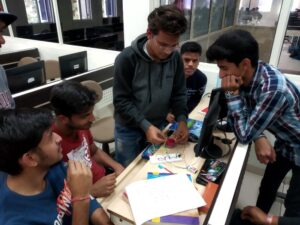
2. SIG- Mechatronics
Mechatronics is an interdisciplinary branch of engineering which includes mechanical electronics and computer. ECE at IIST offers mechatronics SIG for making students industry ready with the mechatronics skills that enhances your industry knowledge.
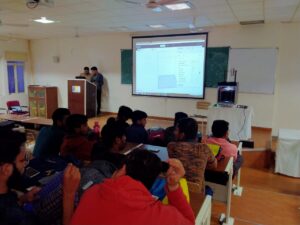
3. SIG- Internet of thing (IoT)
The purpose of the Internet of Things Special Interest Group (IoT SIG) is to promote the development, standardization and application of signal and information processing technologies targeting unique challenges from emerging IoT scenarios that require analysing, summarizing, and protecting of real-time signals and information exchanged or shared by massive data generating devices such as sensors, machines, robots, cars, etc and their corresponding data processing nodes.
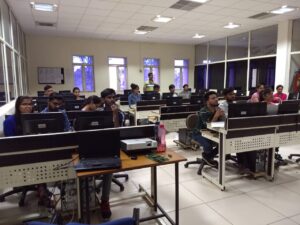
4. SIG- Robotics
The entity aims to provide students with field knowledge about Robotics. The SIG focuses more on project-based learning in addition to preparing the students to face the hurdles which usually come while implementing the algorithms. The SIG continuously work in projects along with students across all domains. The projects include quadcopter dynamics, balance bot and projects on Raspberry Pi & Arduino, which are the most popular prototyping boards among the budding engineers.
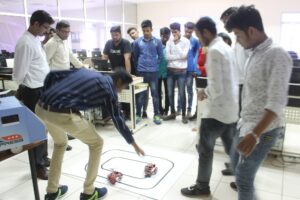
5. SIG- Signal & Image processing
Digital Signal Processing (DSP) is concerned with the representation of signals in digital form, and with the transformation of such signal representations using digital computation. Digital Signal Processing is at the core of virtually all of today’s information technology, and its impact is felt everywhere — in telecommunications, medical technology, radar and sonar, and in seismic data analysis. The SIG focuses on imparting the DSP knowledge and bringing out different projects in the area of digital signal processing.
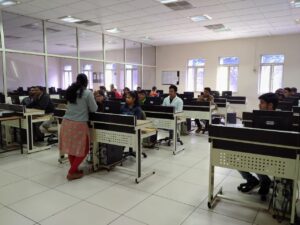
6. SIG- Communication System
This SIG focuses on project based learning and training students to meet the emerging market challenges in the area of Communication like 4G, 5G etc.
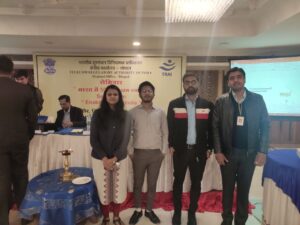
It is a platform to encourage the innovative projects from robotic lab setup through e-Yantra Lab setup initiative (eLSI- IIT Bombay) in colleges across the country. These projects are funded by MHRD under National Mission on Education through ICT (NMEICT). IIST is proud to have this lab setup in our campus.
An initiative by IIT Bombay that aims to create the next generation of embedded systems engineers with a practical outlook to help provide practical solutions to some of the real world problems. It aims to spread education in embedded systems and Robotics. Also, helps in better performance at Robotics competitions such as the e-Yantra Robotics Competition with trainings done at IIST campus.

National Final at IIT Bombay Agri-Drone (Pesticide Spraying Drone)
Virtual Labs is a project initiated by the Ministry of Human Resource Development, Government of India, under the National Mission on Education through Information and Communication Technology. The project aims to provide remote-access to Laboratories in Electronics & Communication Engineering students at all levels from under-graduate to research.
It also intends to develop a complete Learning Management System where the students can avail the various tools for learning, including additional web-resources, video-lectures, animated demonstrations and self-evaluation. There is also a component wherein costly equipment and resources are shared, that are otherwise available to only a limited number of users due to constraints on time and geographical distances. Seven IIT’s (Delhi, Bombay, Kanpur, Kharagpur, Madras, Roorkee and Guwahati), IIIT Hyderabad, Amrita University, Dayalbagh University, NIT Karnataka, and College of Engineering, Pune, are the institutions participating in the project.
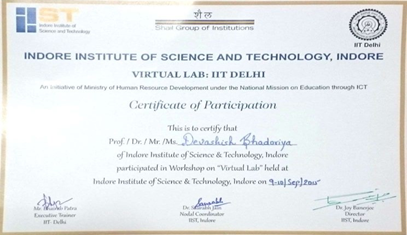

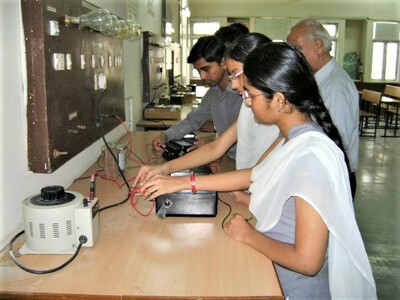
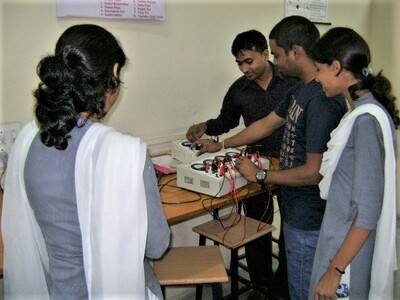
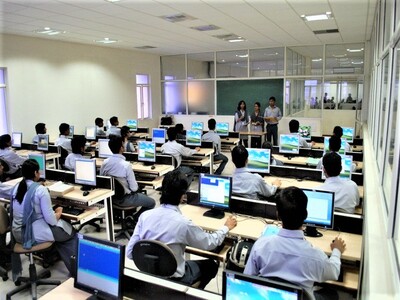
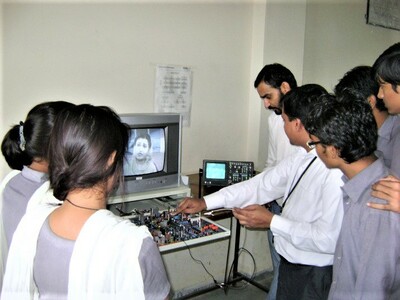
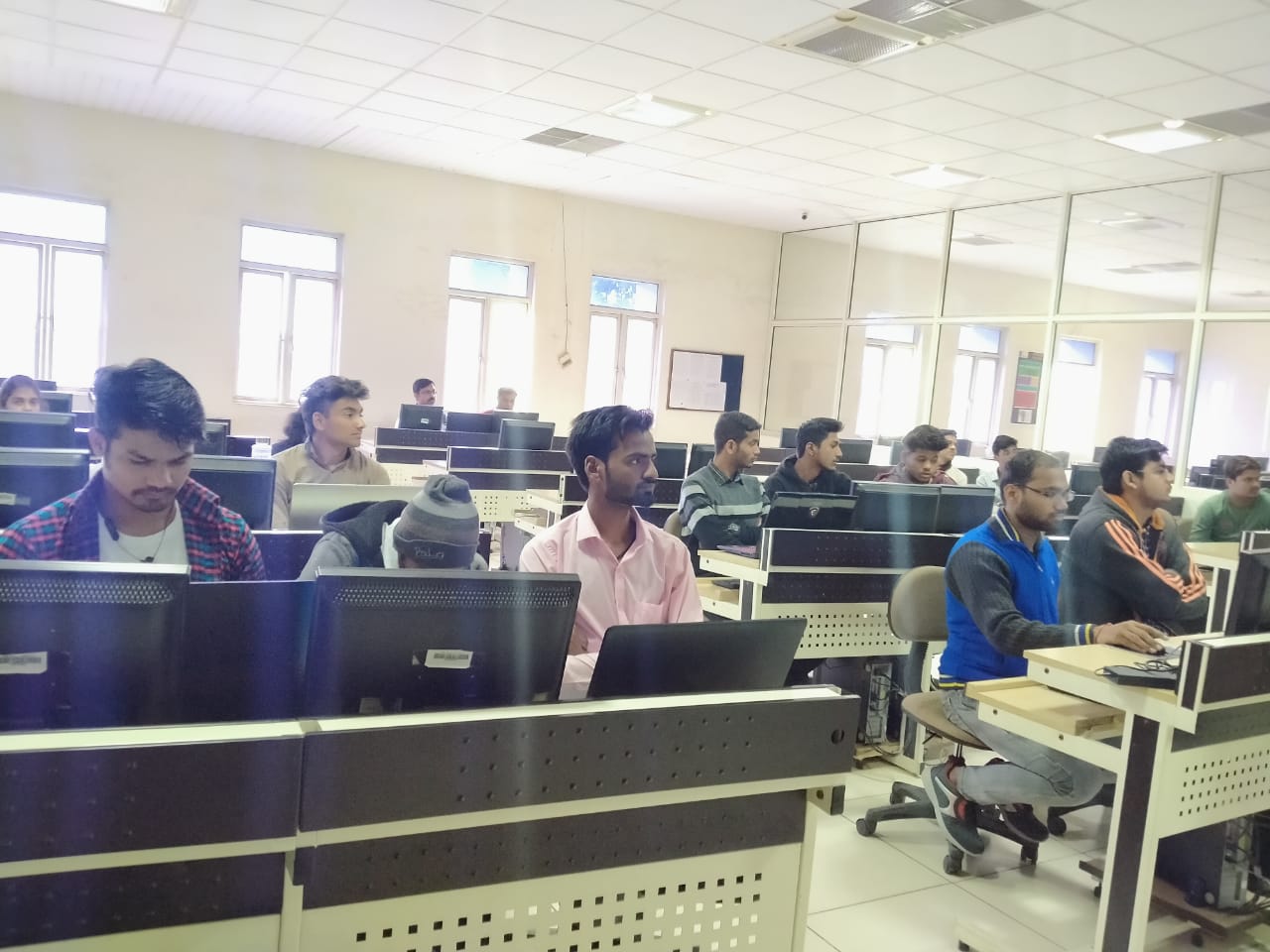

Career Opportunities for Electronics and Communication Students
Electronics and Communications engineers are at the foundation of all electronic devices- your Smartphone, laptop, e-reader, LED lights, from portable music players to global positioning systems (GPS), or even your car. Electronic systems are at the heart of the new industrial revolution and play a vital role that affects nearly every aspect of our modern daily lives.
Electronics and Communications engineers create technologies that connect the world and help make our lives better. Following are a few notable areas where ECE aspirants can build their careers, to name few-
These systems require professional electronic engineers for their design, development, commission, service and management. If being part of an exciting profession that investigate solutions to virtually every problem encountered today appeals to you, then you are invited to consider Electronic Engineering for your career choice.
The desirable of all, a job in the chip industry is an ultimate to the career. With ECE as your subject, only you have the chance to grab this post. So, what do you do after getting the job? The answer is, you will be working for the finest of the finest companies, like Intel, IBM, Apple, etc. That’s a tremendous feel to say the least. And you will be getting paid with a 7 figure income, coupled with various amenities.
Another highly positive career prospect is “Nano technology”. Electronic gadgets are becoming small in size every year, but very powerful in the performance. And this would only happen with nano technology. Getting placed in these companies is a dream comes true indeed.
Robotics, another larger than life field for the ECE students. Due to the advent of robots in many fields, it is mandatory to hire an electronic engineer to develop or maintain the robot.
There are numerous other electronic jobs which can pay you with huge paychecks. By studying ECE, you can be sure that you will land into one of the finest companies in the world with a huge salary package.
Research and development
Electronics and Communication Engineers can follow the M. Tech- Ph.D- Research path innovation and development is what interests them. Organizations like ISRO, DRDO, SAIL and BHEL lead in the research field and are ideal workplaces to engineer new and better technologies for the enhancement of the communication and signal systems.
Value Addition:
As engineering education differs from traditional education in the sense that it is a professional education which cannot be de-linked from practices going on in real world industries. So, apart from traditional engineering education, EC department faculty members have made special endeavors to include the following value additions.
From the current session onwards, the ECE students shall not have to move out for taking industrial training as ECE department is planning to start eYantra Robotics lab under the guidance of IIT Bombay and Virtual Lab division by IIT Delhi to conduct advance virtual lab tutorials, certifications and professional consultancies. This will help the students of the department to complete their course theoretical as well as practical within the premises of the ECE department.
In house training for extremely demanded international certifications like ISTE student chapter will be provided by ECE department faculty members. This addition has made it possible for the students to fulfill their dreams of getting industry sought, high values professional education supplemented with engineering education. This will increase their employment opportunities tremendously.
EC department is in the process of creating MOU with certain EC based industries to provide real life projects for the EC branch students. Year 2016-17 a group has made 3-D printer which has proved a milestone in the field of electronics and mechanical design. This process is already in the pipeline and it is expected that for the next coming batches, this facility will be made available.
The top scorers of each section are given opportunity to have on job training, where they gain hands on experience in latest telecommunication technologies like GSM, CDMA, Optical fiber technology, ISDN, Broadband technology, 3G, 4G, 5G. This training is very effective to get employment in the various private telecommunication companies.
Consistent interaction with the International bodies like IEEE, IET by publishing and presenting the research works by faculties of ECE department play the key role in value addition. The latest international & national conferences and technical seminars by industry experts are being attended by the faculties to update their technical advancement in their area of research. Our faculty team has good number of papers published in reputed journals having good impact factor and they are being motivated to have their own patents.
What does an Electronics & Communication Engineer do?
All of the applications which make our life easier and enjoyable such as Television, Radio, Computers, Mobiles etc. are designed and developed by Electronics and Communication Engineers
Why should you choose Electronics and Communication Engineering Branch!
Electronics and Communication engineering is one of the most popular engineering branches out there. Among the Indian engineering aspirants, this particular discipline has been a popular choice for quite some time. With the evolution of the computer age, electronics & communication has transformed into a field that is inevitable, required by almost all the industries. Electronics is now part of our everyday life, from the mobile phones to televisions, computers and even the high-end advanced satellites that are helping us to lead a smooth life. Even electronics and communication engineering is the major driving force for the present day Information Technology revolution. Electronics and Communication Engineering has also penetrated into other areas like healthcare, instrumentation, automation, remote sensing, signal processing etc. So students pursuing electronics and communication engineering have a lot of scope in varied industries.
Career outlook for ECE students!
It will be important to take a look at the figure provided by the Bureau Labor of Statistics (BLS).It is predicted that the jobs for engineers will grow by 7% from 2016 to 2026. Furthermore, it has also been found that the employment in the ECE sector has amplified significantly in the last few years. The reason behind this positive change of wind is the growing nexus between the electronics industry and the digital technology. ECE students can develop an exciting career in industries like consumer electronics manufacturing organization, Telecommunication & IT industries, Health care equipment manufacturing, Mobile communication (2G, 3G, and 4G), Internet technologies, Power Electronics, and other industries like steel, petroleum and chemical industry etc. Graduates with Best Electronics and Communication Engineering College also have lots of opportunities in Government and private companies in the areas of design, manufacture, installation, operation, and maintenance of electronics equipment and systems. With the advent of latest technological innovations, new opportunities came into existence for electronics & communication engineers. The latest technologies include self-driving cars, autonomous drone logistics, robotics, automation in industries, smart energy systems etc. But getting acquainted with these industries will not be easy as they demand engineers who are more hands-on with the latest technologies.
Indian Telephone Industries, Civil Aviation, Development Centers in various States, Defense, A.I.R, Railways, Bharat Electronics Limited, D.R.D.O, Telecommunication, Software Engineering/IT, Power sector, Hardware Manufacturing, Home Appliance and VLSI design, Television Industry and Research & Development etc are some of the popular sectors where the services of an Electronics and Communication engineer are required.
Some popular recruiters offer good work opportunities to electronics and communication engineers.
Government Sector Companies
Private Sector Companies
Salary prospects in ECE!
An electronics engineer has good career opportunities both in India and abroad. Salary packages offered to electronics and communication engineers vary upon various factors such as working skills, qualifications, working area, recruiters and many other factors. The job market for ECE is on demand and industries are looking for qualified engineers who can assist them on latest technologies. With recent technological advancements, the scope for the electronics engineers is on the rise. However, according to payscale.com the average annual salary of these professional includes Rs. 312,408 per year. Electronics students with skills in robotics, automation technologies, renewable energies, Internet of Things (IoT), mechatronics engineering concepts add more value to their average pay scale. The aim of students pursuing electronics engineering is to get a highly paid job, so improving skill sets will definitely impact their pay scale a lot.
What is the scope of Electronics and communication engineering in overseas?
With the recent advancements in technologies, most of the industries are beginning to adopt robotics, automation technologies, smart energy systems, Internet of Things (IoT) into their process. And a lot of these industries are established in Gulf countries, Germany, China, Canada etc. So students pursuing electronics & communication engineering have lot of job opportunities available, this is mainly because of the presence of various manufacturing firms outside India. Electronics Engineers who are specialized in Control & Power Systems can find good opportunities in Japan, Germany, US & Korea. There is also a variety of job roles available in multi-disciplinary streams which an electronics engineer can take up.
What are the major technologies in which an ECE engineer can work on?
What are the skills that Indore Institute of Science and Technology, IIST Indore provide to our ECE students to make Industry ready?
IIST focus on following areas for ECE students to make Industry ready is as follows:
| S. No. | Title | SIG | Date & No. of Days | Target Audience | Resource person / Faculty Name | Outcome | Photographs |
| 1 | Workshop on Advanced Robotics | Robotics | 24 June – 28 June 2019 (5 Days Workshop) | II and III Year and IV Year EC Students | Mr. Atul Singh Kushwah
Mr. Rupesh Kumar Dutta (IIST Faculty) |
|
 |
| 2 | Design and Fabrication Workshop | Design and fabrication | 1 July – 3 July 2019 (4 Days Workshop) | II and III Year EC Students | Mr. Atul Singh Kushwah
Mr. Devendra Singh Mandloi Ms. Arpita Tiwari (IIST Faculty) |
|
 |
| 3 | Workshop on Advanced IOT Application | IoT | 29 June to 5 July 2019 (7 Days Workshop) | EC IV Year Students | Mr. Rohit Kukreja
(Indeyes Infotech) Mr. Atul Singh Kushwah (Coordinator) Mr. Rupesh Kumar Dutta (Coordinator) |
|
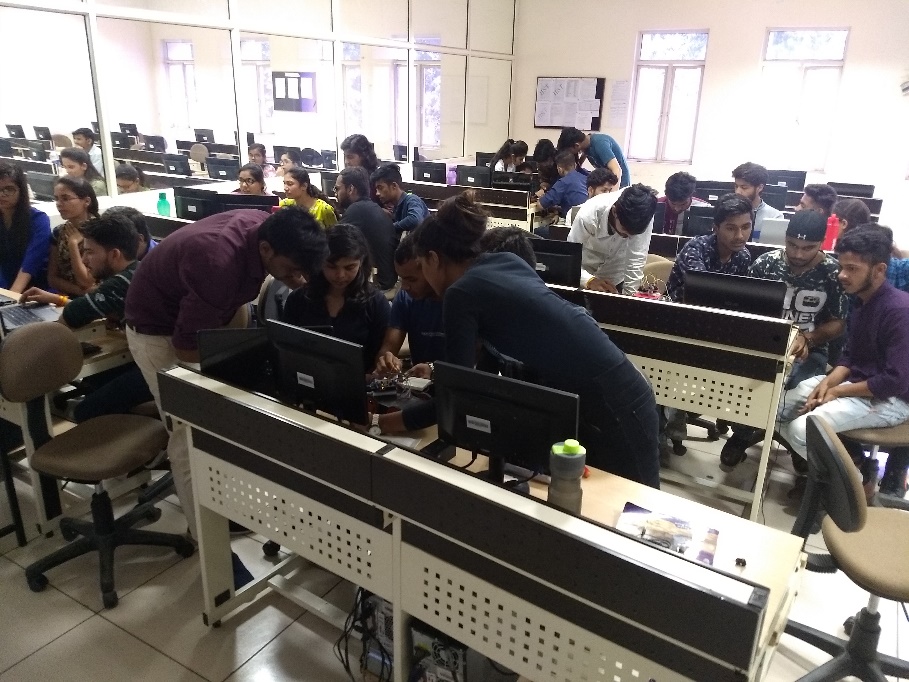 |
| 4 | eYantra Workshop on Robotics | 11-12 October 2019 (2 Days FDP) | Intercollege Faculties | Mr. Aditya Pawar
Mr. Arjun Sardana Mr. Vikrant Fernandes (eYantra IIT Bombay) Mr. Atul Singh Kushwah (Coordinator) Mr. Rupesh Kumar Dutta (Coordinator) |
|
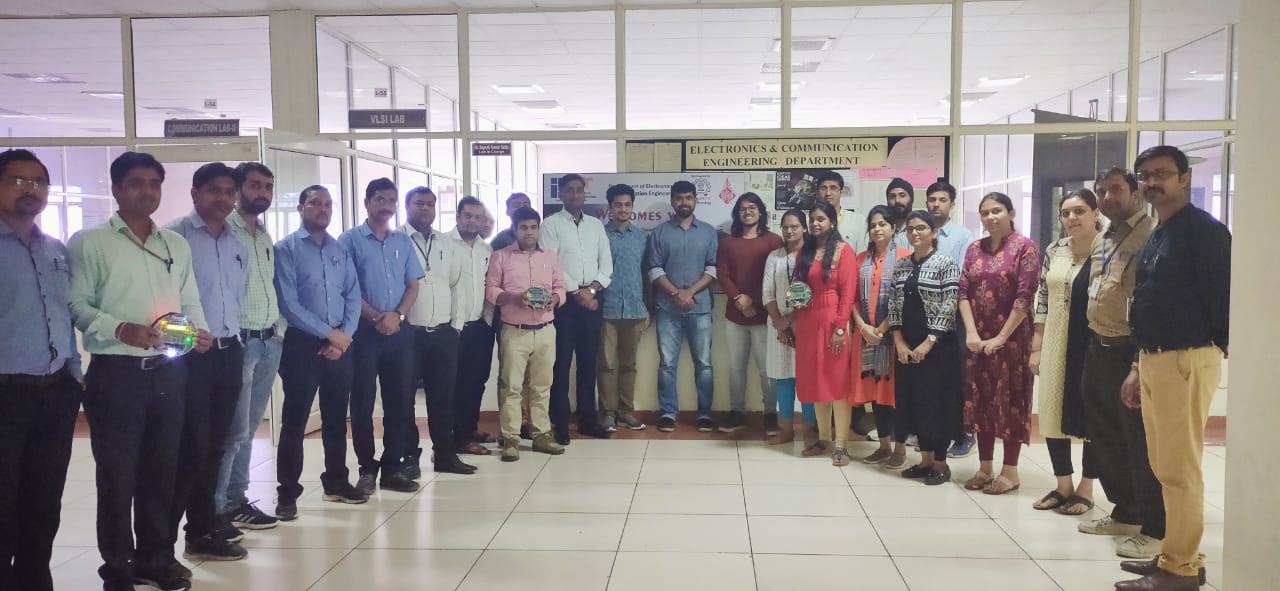 |
|
| 5 | Workshop on VLSI Design | Design and Fabrication | 02-01-2020 to 03-01-2020 (2-Day Workshop) | II and III Year Students | Mr. Ankit Jain
Mr. Rupesh Kumar Dutta |
|
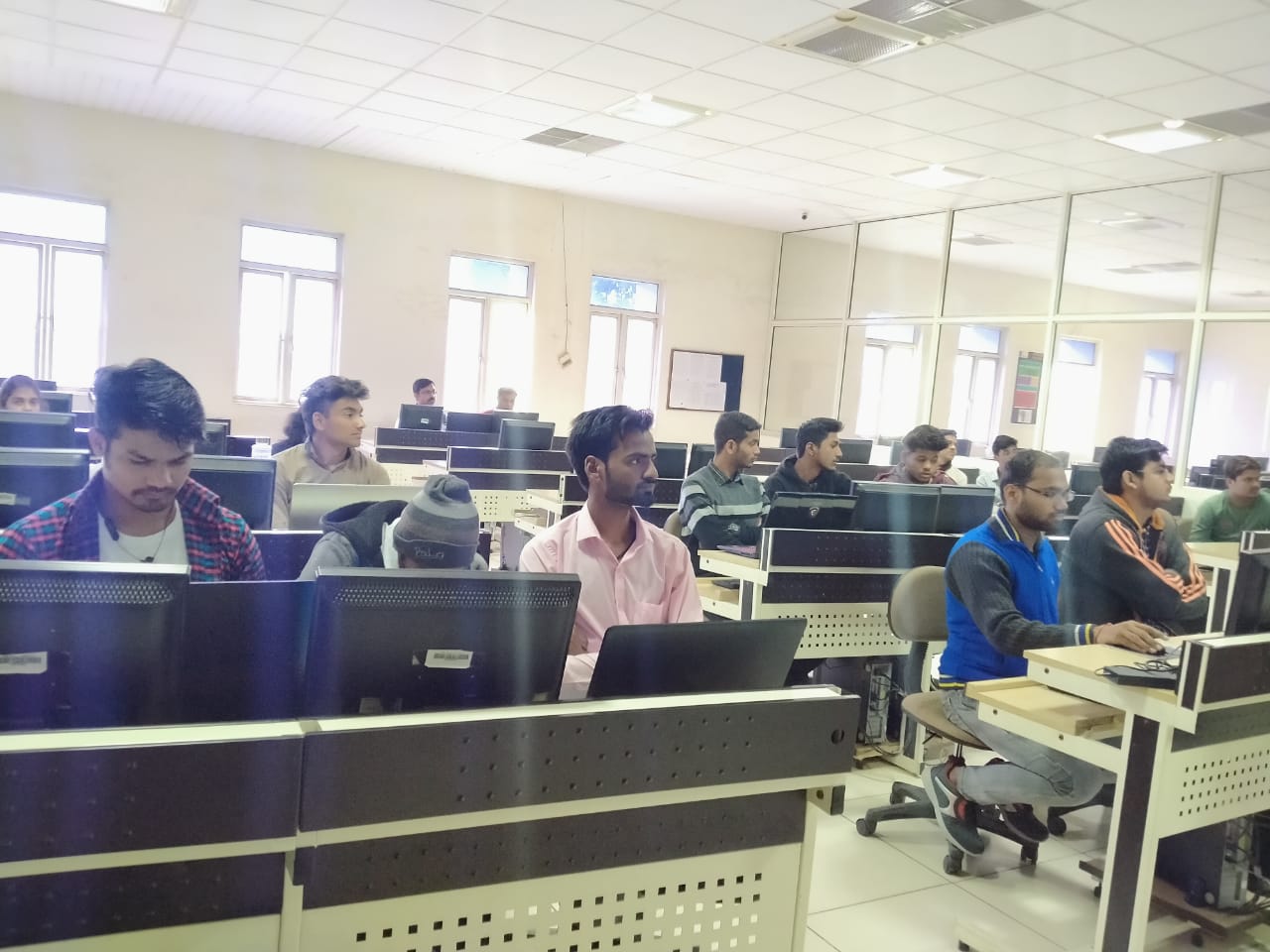 |
| 6 | Workshop on Fun with Arduino | Robotics | 02-01-2020 to 04-01-2020 (3-Day Workshop) | I Year Students | Mr. Atul Singh Kushwah
Ms. Arpita Tiwari |
|
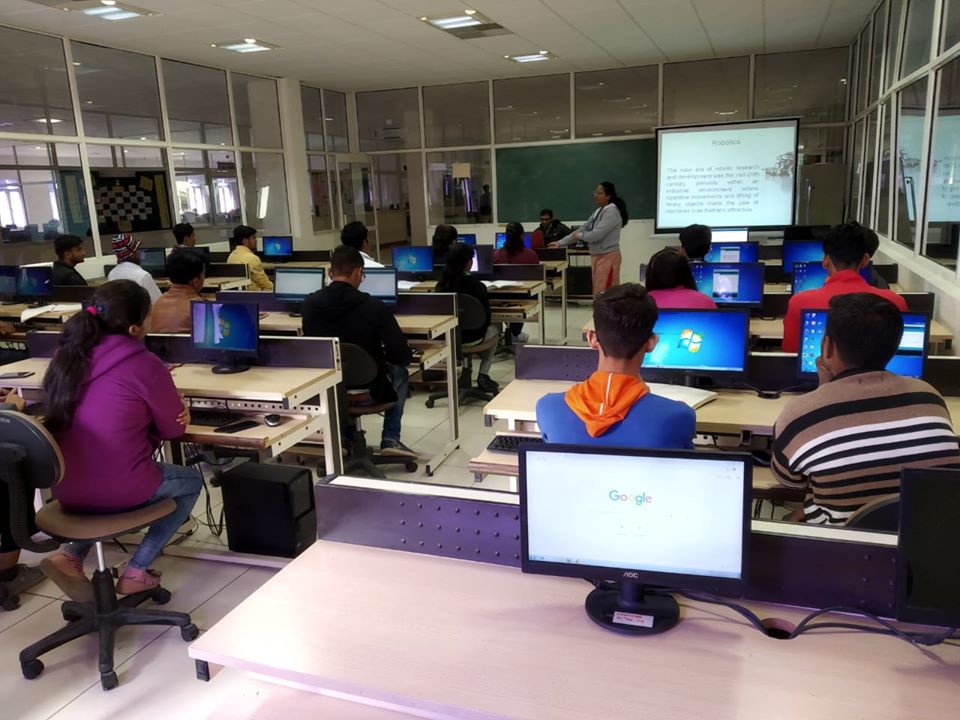 |
| 7 | Internship Training Program on Arduino / Raspberry-pi | Robotics | 06/01/2020 to 11/01/2020 (6 days) | II and III Year Students | Mr. Atul Singh Kushwah
Mr. Shrawan Kumar Namdeo |
|
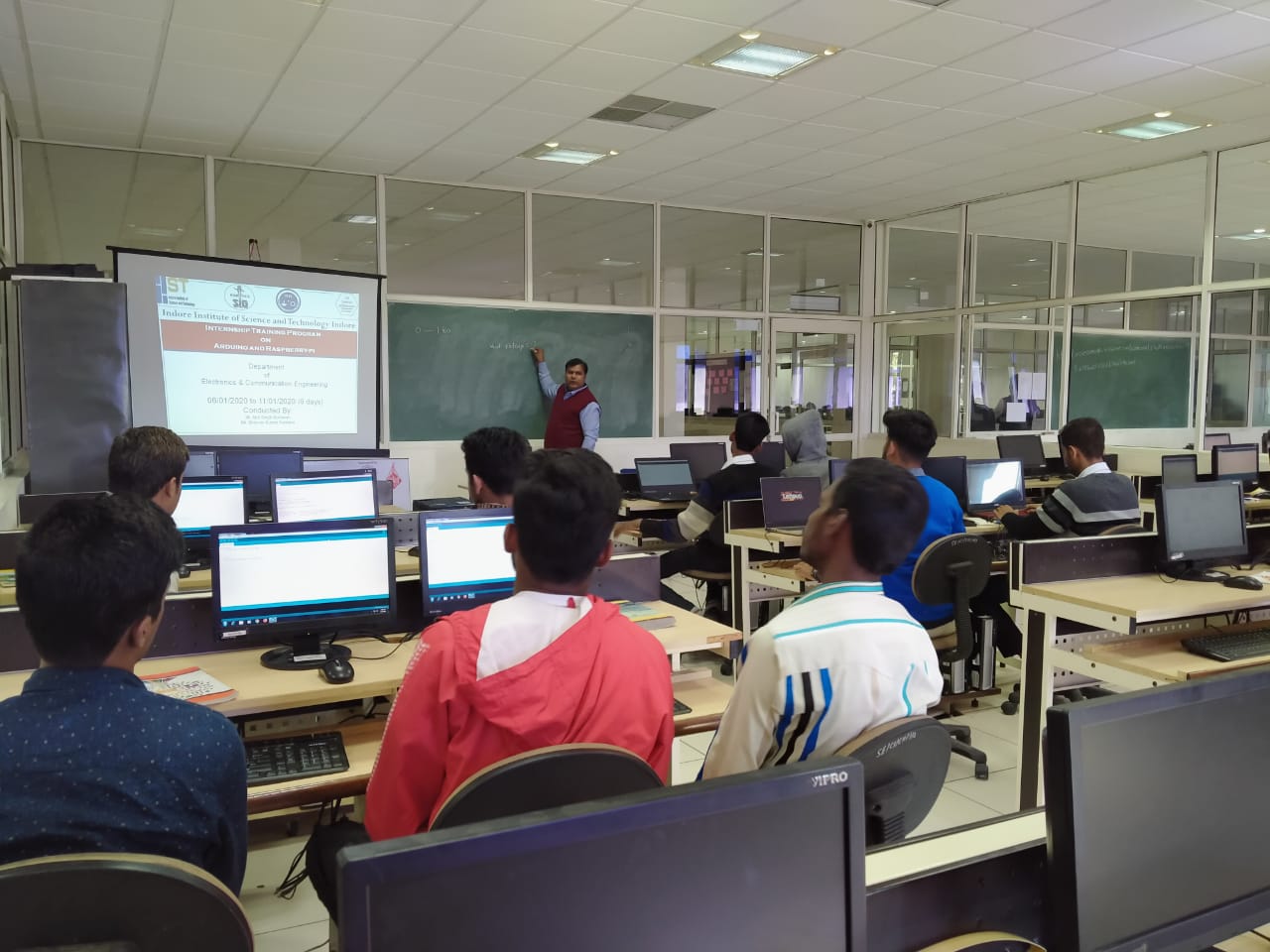 |
The use of innovative methods in educational institutions has the potential not only to improve education, but also to empower people, strengthen governance and galvanize the effort to achieve the human development goals for the country.
Traditional Teaching Method: In the pre-technology education context the teacher is the sender, the educational material is the information and the student is the receiver of the information. In terms of the delivery medium, the educator can deliver the message via the “chalk-and- talk” method and LCD projector transparencies. This learning perspective is a popular technique, which has been used for decades as an educational strategy in all institutions of learning. Basically teacher controls the instructional process, the content is delivered to the entire class and the teacher tends to emphasize factual knowledge.
Innovative Teaching Methods: Following innovative learning methods are initiated and implemented by the faculty for students to learn in a better manner.
Teaching Using Physical Models
In the course, Electronics and Instrumentation, while explaining about the CRT to the students of II Year ECE, the physical device of CRT was demonstrated to the students to get them a better understanding about the working of the device.
Name of the Teacher: Mr. Devendra S Mandloi
In the course, BEEE, while explaining about the motors to the students of I Year CSE, the physical open weiding was demonstrated to the students to get them a better understanding about the working of the motor.
Name of the Teacher: Mr. Ashutosh Kashiv
Teaching Using Demonstration of Kit
In the course, Microprocessor and its application, Subject teacher demonstrated the microprocessor kit in the class for better understanding the concept of processor.
Name of the Teacher: Dr. Mukesh Patidar
Group Learning
In the course, Electronics Devices, while explaining about the Basis Components to the students of II Year ECE, the physical Components was demonstrated to the group of students to get them a better understanding about the working of the components like diode, transistor etc.
Through Workshops
A Training for students was conducted on Designing PCB an Embedded System with Hands – on Practice” on 07 August 2023, for III Year Year ECE students. 40 students participated with enthusiasm in this program, to learn the PCB Design.
A workshop for students was conducted on PCB Design and Testing with Hands – on Practice” in 2022, for 1st Year and 2nd Year ECE students. 22 students participated with enthusiasm in this program, to learn the PCB Design. Different stages of PCB fabrication were learnt by the students.
Name of the Teacher: Mr. Ravi Yadav and Mr. Raju S Dawer.
Peer Learning Through Project Presentation
The ECE Department, organized a Peer Learning through Project Presentation of EC IV Year in 2023, VLSI Lab for III year ECE Students.
Name of the Teacher: Mr. Shravan Namdeo and Mr. Ravi Yadav.
Peer Learning Through Techanical Presentation
The ECE Department, organized a Peer Learning through Technical Presentation on various emerging areas like robotics, IOT etc of EC II Year on 22/12/2022.
Name of the Teacher: Mr. Prabhat Pandey, Mr. Nitin Chauhan and Mr. Amit Kumar
Through Internship
A 40 Hours Internship for ECE students was conducted on Real Time Embedded System and IoT Application with Hands – on Practice” in association with Pi Tech. Pvt. Ltd., for III Year ECE students. 52 students participated with enthusiasm in this program, to learn the Embedded System and IoT Applications.
Through Certificate Course / Value added Courses
A 30 Hours Certificate Course for ECE students was conducted on AI Based Product Development by Mr. Shivang Trivedi, for II Year ECE students. 52 students participated with enthusiasm in this program, to learn the AI Application.
Through Animation Videos
The concepts of modulation techniques can be understood in a better way by the students if animated videos are presented to them.
The concept of Amplitude Modulation technique wherein the amplitude of the carrier wave is modified according to the instantaneous amplitude of the message signal is taught using animated videos that are available in the internet.
Name of the Teacher: Ms. Arpita Tiwari
The concepts of transistor as a switch can be understood in a better way by the students through animated videos are presented to them.
Name of the Teacher: Mr. Prabhat Pandey
The concepts of motor were explained through animated videos for better understanding of working of the motor.
Name of the Teacher: Mr. Shravan Namdeo
Project Based Learning
As part of Innovative teaching and learning methodology, the Department of ECE was conducted Project based learning through following activities:
| Date | Project Based Learning | Participation | Class/year | ||||
| 17th May to 24th May 2022 | Art and Science of PCB Design and Development | 44 | 2021-2025 | Pi Tech | 44 | 2021-2025 | Mr. Ravi Yadav |
| 31st Jan- 12th Feb 2022 | Project Skill Development for Placement in association with Pi Tech Pvt. Ltd. | 12 | 2018-2022 | ||||
Through Participative Learning
All Project Based Learning, Skill Based Learning and Lab work was conducted 3 to 5 students groups so that they can learn participative manner.
Through Quiz
It is Mandatory all in subjects and certificate course to conducted at least one Quiz examination
Through Field Visit
In the Course, BEEE, for better understanding subject faculty arranged field visit in the campus and show transformer and Generator room.
Video Recording of Lectures
In most of subject during Covid subject faculties shared recorded lecture for regular classes and lab work so that before coming in the class they have idea about topics.
Video Recording of Project work done by the students
ECE department motivate the students to submit recorded project explanation so that students understand the way of communication and also shared the video to the junior to understand the importance of project as well as to understand the project work.
Through Participation in Hackathons/ eYantra Robotics Challenge
(Self Learning)
Students are encouraged to participate in various academic activities such as Hackathons/ eYantra Robotics Competition / Texas Analog Design Challenge etc. that bring out their innovation and creativity. The theoretical concepts explained in the classroom are broadened and skill was learn during project based training and finally students participating in these academic competitions.
College has been organizing these activities on a regular basis that improve critical thinking of students.
Some of the activities hosted by our college are:
eYantra National Finalist for Robotics Competition
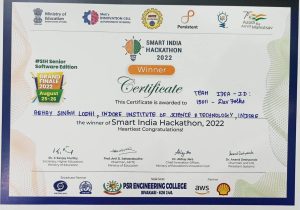
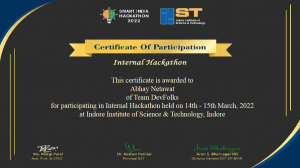
MOOC Certification
Through PPT
In most of Subject teacher used PPT for explaining the topics and also used video and animated video for better understanding of content.
Group Assignment or Group Task
In the course, Network Analysis, respective subject faculty given two group assignment or task. In Task 1: – Form a Group of 5 students and come prepared with one question from unit 1 (Nodal, Mesh, KCL and KVL only). The Group task was performed on 17-18 Nov 2022. One group was ask one question from rest of the groups and rest of the groups having 10 minutes to solve and submit the solution to question assign group within 10 minutes and then question assign group evaluate based on final answer only with few random step check and assign marks in form of 1 and 0 only similarly all other groups followed the same process. In the end maximum marks group will be winner. At least the same group solves the problem and explains to all peers. In this manner peer to peer learning happened and also understand the team work
Task 2: Form a Group of 5 Students and divide all 30 questions equally i.e 6 question each and solve on paper and mention the name of group as well as solved by you and at last merge all solution and submit in the google classroom or in hard copy through this students will able to understand the work divide and also understand the importance of each team members.
NPTEL
Apart from the NPTEL videos on the college local server, links for the Selected NPTEL videos are placed in Google Classroom for reference.
Group Discussions and debates
CDC Cell Continuous conducted GD for the students and also lexicon club conducted debates for the students

The Department of Electronics and Communication Engineering (ECE) at Indore Institute of Science and Technology (IIST), Indore, adopts a comprehensive and outcome-based approach to strengthen its teaching–learning process. The following structured steps are undertaken to ensure systematic planning, delivery, and evaluation in alignment with the curriculum prescribed by Rajiv Gandhi Proudyogiki Vishwavidyalaya (RGPV) and AICTE reforms.
Step I: Receipt of Programme-wise Curriculum and University Academic Calendar
At the beginning of every academic session, the department receives the official curriculum structure and academic calendar from RGPV, Bhopal. This calendar outlines the semester duration, examination schedules, internal assessment timelines, holiday etc. It serves as the foundation for the institute’s and department’s academic planning. The department thoroughly reviews the curriculum and identifies any possible areas requiring additional inputs for better alignment with the desired Program Outcomes (POs) and Program Specific Outcomes (PSOs).
Step II: Formulation of Institute Academic Calendar and Committee Structuring
Based on the RGPV academic calendar, the institute formulates its own academic calendar, which includes dates for internal assessments, workshops, and co-curricular activities. To facilitate the academic process, statutory and functional committees such as the Internal Quality Assurance Cell (IQAC), Anti-Ragging Cell, Industry-Academia Cell, and Grievance Redressal Cell are constituted or restructured at the start of each semester. These committees play a key role in maintaining academic discipline, monitoring quality, and supporting continuous improvement.
Step III: Departmental Planning – Activity Calendar and Faculty Preferences
The ECE department develops a departmental academic activity calendar that aligns with the institute-level calendar and incorporates department-specific events such as expert talks, seminars, industrial visits, and training programs. Faculty members are asked to submit subject preferences based on their expertise and experience. The departmental activity calendar also outlines initiatives to bridge curriculum gaps and promote PO/PSO attainment through enrichment programs and add-on learning modules.
Step IV: Elective Choice from Students, Subject Allotment, Load Chart, and Timetable Preparation
Collect the Elective Choice from the students before subject allocation. Following the collection of faculty preferences, subjects are allotted in line with domain specialization. Teaching load charts are prepared, and comprehensive timetables are created for theory and lab sessions. Roles and responsibilities for laboratory support staff, lab in-charges, and coordinators are also assigned. Prior to the commencement of the semester, lab readiness is ensured by checking equipment, installing relevant software, and preparing lab manuals.
Step V: Communication of Evaluation Scheme
The evaluation scheme, comprising 30% Continuous Internal Evaluation (CIE) and 70% Semester End Examination (SEE), is prominently communicated to students through notices. Rubrics are discussed with students to ensure transparency in assessment. Faculty members explain the assessment methodology and course outcomes at the beginning of the course to promote a result-oriented learning approach.
Step VI: Conduct of Teaching–Learning and Monitoring
The Department of Electronics and Communication Engineering (ECE) at IIST Indore ensures that classroom teaching and laboratory sessions are conducted rigorously in accordance with the prescribed academic timetable and well-formulated lesson plans developed at the beginning of each semester. Faculty members maintain detailed teaching diaries and comprehensive course files, which capture daily progress in syllabus coverage, pedagogical approaches employed, and assessment activities conducted. These documents serve as both a record of instructional delivery and a tool for internal review.
To ensure academic quality and instructional consistency, the Head of the Department (HoD) performs regular monitoring through random classroom visits, interaction with students, and systematic evaluation of teaching records. Faculty members are supported and mentored through feedback mechanisms and observations, with the objective of enhancing both content delivery and learner engagement. In addition, each course coordinator submits a formal course progress report in a standardized format on a monthly basis.
To promote discipline and ensure active student participation, attendance is consolidated every fifteen days and shared with the parents of students exhibiting irregular attendance. These communications are issued in the form of formal letters, emphasizing corrective measures and academic accountability. This proactive communication loop is crucial in reducing absenteeism and reinforcing student responsibility.
The department emphasizes the integration of Information and Communication Technology (ICT) in pedagogy to enrich the learning environment and enhance student outcomes. At IIST, ICT is not viewed merely as a support tool, but as a core component of educational delivery. The institute fosters an ICT-enabled ecosystem where faculty combine Technological Pedagogical Content Knowledge to effectively engage students and promote long-term, field-specific learning.
All classrooms are equipped with smart board. All seminar halls, and auditoriums are equipped with LCD projectors, projection screens, green boards, and sound systems. These digital classrooms facilitate hybrid teaching methods that go beyond the traditional chalk-and-talk model. Faculty members encourage to use PowerPoint presentations, digital slates, instructional videos, document cameras, and real-world application demonstrations to make content delivery more interactive and contextual.
Step VII: Continuous Internal Evaluation (CIE)
Continuous Internal Evaluation is carried out through two Mid-Semester Tests (MSTs), quizzes, assignments, viva voce, and classroom interaction. Each component is mapped with specific Course Outcomes (COs), and performance is analyzed to determine attainment levels. Laboratory assessments include continuous evaluation, internal exams, and projects or PBL activities. Standardized rubrics are used for evaluation to ensure objectivity and consistency across all sections.
Step VIII: Pedagogical Innovations and Student-Centric Strategies
The Department of Electronics and Communication Engineering (ECE) at IIST Indore actively implements pedagogical innovations to enhance student engagement and learning outcomes. Faculty use diverse instructional techniques such as real-time problem-solving, animated demonstrations, collaborative learning, flipped classrooms, and project-based learning (PBL). Students are exposed to simulation tools and modern software like MATLAB, Keil, Android Studio, and Google Colab. Technical competitions, quizzes and expert talks are organized to promote active and experiential learning.
Experiential learning forms a core component of the academic process. Students engage in practical, hands-on experiences through laboratory sessions, minor and major projects, internships, and industrial visits. Value-added and certificate courses are regularly offered to provide exposure to emerging technologies and to align student competencies with current industry expectations. Additionally, virtual labs and remote experimentation platforms allow students to conduct simulations beyond classroom hours, ensuring continuity of learning even in hybrid or off-campus settings. MOOCs through platforms such as NPTEL, Coursera, and edX are encouraged.
Participative learning is actively promoted through classroom activities such as group discussions, technical presentations, video demonstrations, and mock interviews. Student clubs and technical societies act as platforms for peer learning, mentoring, and personality development. The department also organizes expert lectures, seminars, and skills enhancement workshops to create exposure to domain experts, researchers, and industry practitioners. These events enhance both academic learning and professional readiness.
To systematically build problem-solving skills, the department organizes technical competitions, SIG (Special Interest Group) activities, quizzes, hackathons etc. Students are encouraged to publish technical papers and participate in national and inter-collegiate events. These activities aim to foster analytical thinking, innovation, and structured problem-solving abilities—critical components of engineering education.
Workshops on programming, simulation, AI/ML, VLSI, embedded systems, and communication tools are regularly conducted using ICT tools. These sessions are facilitated by in-house faculty, industry experts, and alumni, and they are aimed at enhancing both technical depth and employability skills.
In summary, the pedagogical ecosystem at ECE, IIST Indore, is designed to be student-centric, ICT-integrated, and innovation-driven. The structured incorporation of experiential, participative, and problem-based learning—supported by modern digital tools—ensures that students are not only academically competent but also industry-ready and capable of life-long learning.
Step IX: Support for Weak and Bright Students
The institution takes a systematic approach to student development, ensuring that learners build a strong foundation in their skill set and excel in both academics and overall personal growth. The institution implements the best practices in teaching and learning with established procedures and regular assessments. Students are assessed based on their performance in qualifying-examinations, mid-term exams, and assignments.
Individualized Support: Faculty is readily available to support students through individual counseling, remedial coaching, extra notes, and group discussions. Additionally, slow learners are encouraged to participate in internal-examinations and academic activities to boost their confidence and overall development.
Enriching Advanced Learners: The institution goes beyond the standard curriculum for advanced learners, seminar sessions and self-directed learning opportunities. They are also encouraged to participate in experimental learning through industrial visits and in innovative projects. Opportunities to compete in national/international competitions further enhance their skills and confidence.
Both slow and advanced learners can earn additional credits through MOOCs on NPTEL, covering both basic and emerging trends.
Step X: Feedback Collection and Action Taken
Structured feedback is collected at multiple points during the semester from students, alumni, faculty, and parents. Feedback mechanisms include online surveys, direct interaction, lab performance evaluations, and exit feedback. The feedback is analyzed and discussed in Program Assessment Committee (PAC) meetings, and corrective measures are implemented wherever required. Faculty members receive performance-based feedback that contributes to their annual appraisal.
Step XI: Outcome Mapping and Attainment Analysis
Each course is mapped with appropriate POs and PSOs, and the level of attainment is calculated using both direct (assessment scores) and indirect (surveys, feedback) methods. Specific benchmarks (e.g., Level 3 attainment for students score more than 70% marks) are used to determine the success of course delivery. The data is consolidated in course files and reviewed during academic audits.
Implementation and Documentation
All teaching–learning processes and quality initiatives are supported by systematic documentation. This includes academic calendars, course files, lesson plans, CO-PO mapping sheets, lab manuals, teaching diaries, assessment scores, attainment reports, mentoring records, and feedback summaries. The documentation serves as a record of compliance with Outcome-Based Education (OBE) practices and supports the continuous enhancement of teaching effectiveness and student learning outcomes.
| Indore Institute of Science & Technology | |||||||||
| Department of Electronics & Communication | |||||||||
| Faculty data for session 2022-23 | |||||||||
| Sno. | Faculty Name | DOJ | Phone No. | Designation | Highest Qualification | Total Experience in Teaching | Total Experience In Industry | Area of Specialization | |
| 1 | Dr. Keshav Patidar | 10-Jun-20 | [email protected] | 9926530687 | Principal / Director | PhD | 19 Years | 03 Years | Power Electronics |
| 2 | Mr. Ankit Jain | 07-Feb-09 | [email protected] | 9827596927 | Assistant Professor | PhD ( P ),M.E. | 14 Years | VLSI Design and Nanomaterials | |
| 3 | Mr. Devendra Singh Mandloi | 21-Oct-10 | [email protected] | 9893801943 | Assistant Professor | M.E. | 13 Years | 3.5 Years | Digital Instrumentation |
| 4 | Mr. Shravan Namdeo | 5-Sep-11 | [email protected] | 9098071834 | Assistant Professor | M.E. | 10 Years | 01 Year | Digital Communication |
| 5 | Mr. Pranav Paranjpe | 01-Oct-21 | [email protected] | 9424079216 | Assistant Professor | PhD ( P ),M.E. | 13 Years | 03 Years | Digital Communication,Drone Technology |
| 6 | Mr. Prabhat Pandey | 26-Nov-21 | [email protected] | 9752599202 | Assistant Professor | PhD ( P ),M.E. | 13 Years | Embedded systems | |
| 7 | Dr. Mukesh Patidar | 23-Aug-21 | [email protected] | 9770435369 | Associate Professor | PhD | 11 Years | Digital Communication,Materials, Nanotechnology | |
| 8 | Ms.Arpita Tiwari | 26-Jul-18 | [email protected] | 9713641893 | Assistant Professor | M.E. | 6 Years | Digital Communication | |
| 9 | Mr. Amit Kumar | 12-Sep-2022 | [email protected] | 9716003469 | Assistant Professor | PhD ( P ),M.Tech. | 01 Year | Microwave Engineering | |
| 10 | Mr. Nitin Chauhan | 13-Jun-2022 | [email protected] | 8700326744 | Assistant Professor | PhD ( P ),M.E. | 03 Years | Machine Learning | |
| 11 | Mr.Ashutosh Kashiv | 12-Sep-2022 | [email protected] | 9893571050 | Assistant Professor | PhD ( P ),M.Tech. | 17 Years | Power Electronics | |
| 12 | Mr. Ravi Yadav | 21-Sep-20 | [email protected] | 9424029335 | Assistant Professor | M.E. | 2 Years | 4 Years | Hardware Desiging |
| 13 | Mr. Deepak Yadav | 19-Jan-15 | [email protected] | 9993902509 | Assistant Professor | M.E. | 12 Years | 0.6 Years | Digital Communication |
| 14 | Mr. Navneet Palrecha | 12-Jul-20 | [email protected] | 9669040111 | Assistant Professor | M.Tech | 6 Years | 2 Years | Digital Signal Processing |
| 15 | Mr. Abhishek Bhatnagar | 20-Aug-18 | [email protected] | 9479665997 | Assistant Professor | M.E. | 10 Years | Electronics & Communication | |
| 16 | Mr. Raju Singh Dawer | 10-Feb-20 | [email protected] | 9826632529 | Assistant Professor | M.E. | 2 Years | VLSI Design | |
| 17 | Mr. Shashank Khare | 1-Apr-19 | [email protected] | 9713807188 | Assistant Professor | M.E. | 8 Years | Digital Communication | |
| 18 | Mr. Rupesh Kumar Dutta | 27-Jan-15 | [email protected] | 8962512712 | Assistant Professor | M.Tech | 7 Years | Electronics Design and Technology | |
| 19 | Ms. Neha Choudhary | 4-Aug-11 | [email protected] | 9753334478 | Assistant Professor | M.E. | 10 Years | Digital Communication | |
| 20 | Ms. Ritu Saxena | 28-Mar-22 | [email protected] | 7470883249 | Assistant Professor | M.E. | 1 Years | Power Electronics | |
| 21 | Mr. Sumit Kourav | 3-Mar-22 | [email protected] | 8305681993 | Assistant Professor | M.E. | 3 Years | Electronics & Communication | |
| Indore Institute of Science & Technology | |||||||
| Department of Electronics & Communication | |||||||
| Faculty data for session 2022-23 | |||||||
| Sno. | Faculty Name | DOJ | Phone No. | Designation | Highest Qualification | Area of Specialization | |
| 1 | Mr. Ankit Jain | 07-Feb-09 | [email protected] | 9827596927 | Assistant Professor | PhD ( P ),M.E. | VLSI Design and Nanomaterials |
| Areas of Interest | Signal Processing, Robotics & IoT | ||||||
| 2 | Mr. Devendra Singh Mandloi | 21-Oct-10 | [email protected] | 9893801943 | Assistant Professor | M.E. | Digital Instrumentation |
| Areas of Interest | Mobile Comm., Wireless Communication | ||||||
| 3 | Mr. Shravan Namdeo | 5-Sep-11 | [email protected] | 9098071834 | Assistant Professor | M.E. | Digital Communication |
| Areas of Interest | Antenna Design, Transmission line Parameter, Design of communication network, Reconfigurable Antenna, Robotics | ||||||
| 4 | Mr. Pranav Paranjpe | 01-Oct-21 | [email protected] | 9424079216 | Assistant Professor | Ph.D. ( P ),M.E. | Digital Communication, Drone Technology |
| Areas of Interest | Analog and Digital Comm,Wireless Communication,Microwave Engineering,Antenna & Wave Propagation,Drone Technology | ||||||
| 5 | Dr. Mukesh Patidar | 23-Aug-21 | [email protected] | 9770435369 | Assistant Professor | Ph.D. | Digital Communication,Materials, Nanotechnology |
| Areas of Interest | Quatum dot cellular automata, Digital Communication, Wierless technology, Nanoelectronics | ||||||
| 6 | Mr. Amit Kumar | Sep. 2022 | [email protected] | 9716003469 | Assistant Professor | Ph.D. | RF and Microwave Eng. |
| Areas of Interest | Substrate Integrated Waveguide (SIW) antennas, Wideband Antennas, circularly polarized antennas for 5G and MMW, SIW-based sensors, SIW-based multiplexing antennas for IOMT, Antennas for IoT, Antenna Design, Machine Learning | ||||||
| 7 | Mr. Nitin Kumar Chauhan | Sep. 2022 | [email protected] | 8700326744 | Assistant Professor | Ph.D. ( P ), M.E. | Electronics and Communication |
| Areas of Interest | Machine Learning, Artificial Intelligence, Image Processing, Computer Vision, Data Visualization | ||||||
| 8 | Mr. Ashutosh Kashiv | [email protected] | Assistant Professor | Ph.D. ( P ), M.E. | Power Electronics | ||
| Areas of Interest | Wind Generators, Electrical Machines, Electric Vehicles | ||||||
| 9 | Ankit muley | 15-Mar-23 | [email protected] | 993634742 | Assistant Professor | M.Tech | Robotics |
| Areas of Interest | Robotics, Industrial Automation,IIOT, embedded system, machine vision | ||||||
| Indore Institute of Science & Technology | |||||||
| Department of Electronics & Communication | |||||||
| Faculty data for session 2020-21 | |||||||
| Sno. | Faculty Name | DOJ | Phone No. | Designation | Highest Qualification | Area of Specialization | |
| 1 | Dr. Keshav Patidar | 10-Jun-20 | [email protected] | 9926530687 | Principal / Director | PhD | Power Electronics |
| 2 | Mr. Ankit Jain | 07-Feb-09 | [email protected] | 9827596927 | Assistant Professor | PhD ( P ),M.E. | VLSI Design and Nanomaterials |
| 3 | Mr. Devendra Singh Mandloi | 21-Oct-10 | [email protected] | 9893801943 | Assistant Professor | M.E. | Digital Instrumentation |
| 4 | Mr. Shravan Namdeo | 5-Sep-11 | [email protected] | 9098071834 | Assistant Professor | M.E. | Digital Communication |
| 5 | Ms.Arpita Tiwari | 26-Jul-18 | [email protected] | 9713641893 | Assistant Professor | M.E. | Digital Communication |
| 6 | Mr. Ravi Yadav | 21-Sep-20 | [email protected] | 9424029335 | Assistant Professor | M.E. | Hardware Desiging |
| 7 | Mr. Deepak Yadav | 19-Jan-15 | [email protected] | 9993902509 | Assistant Professor | M.E. | Digital Communication |
| 8 | Mr. Navneet Palrecha | 12-Jul-20 | [email protected] | 9669040111 | Assistant Professor | M.Tech | Digital Signal Processing |
| 9 | Mr. Abhishek Bhatnagar | 20-Aug-18 | [email protected] | 9479665997 | Assistant Professor | M.E. | Electronics & Communication |
| 10 | Mr. Raju Singh Dawer | 10-Feb-20 | [email protected] | 9826632529 | Assistant Professor | M.E. | VLSI Design |
| 11 | Mr. Shashank Khare | 1-Apr-19 | [email protected] | 9713807188 | Assistant Professor | M.E. | Digital Communication |
| 12 | Mr. Rupesh Kumar Dutta | 27-Jan-15 | [email protected] | 8962512712 | Assistant Professor | M.Tech | Electronics Design and Technology |
| 13 | Ms. Neha Choudhary | 4-Aug-11 | [email protected] | 9753334478 | Assistant Professor | M.E. | Digital Communication |
| 14 | Mr.Atul Singh Kushwaha | 19-Jan-15 | [email protected] | 9630605425 | Assistant Professor | M.E. | Digital Communication |
| 15 | Mr. Prerit Jain | 11-Dec-17 | [email protected] | 7389002690 | Assistant Professor | M.E. | Digital Communication |
| Indore Institute of Science & Technology | |||||||
| Department of Electronics & Communication | |||||||
| Faculty data for session 2019-20 | |||||||
| Sno. | Faculty Name | Date of Joining | Phone No. | Designation | Highest Qualification | Area of Specialization | |
| 1 | Mr. Ankit Jain | 07-Feb-09 | [email protected] | 9827596927 | Assistant Professor | PhD ( P ),M.E. | VLSI Design and Nanomaterials |
| 2 | Mr. Devendra Singh Mandloi | 21-Oct-10 | [email protected] | 9893801943 | Assistant Professor | M.E. | Digital Instrumentation |
| 3 | Mr. Shravan Namdeo | 5-Sep-11 | [email protected] | 9098071834 | Assistant Professor | M.E. | Digital Communication |
| 4 | Ms.Arpita Tiwari | 26-Jul-18 | [email protected] | 9713641893 | Assistant Professor | M.E. | Digital Communication |
| 5 | Mr. Deepak Yadav | 19-Jan-15 | [email protected] | 9993902509 | Assistant Professor | M.E. | Digital Communication |
| 6 | Mr. Abhishek Bhatnagar | 20-Aug-18 | [email protected] | 9479665997 | Assistant Professor | M.E. | Electronics & Communication |
| 7 | Mr. Rupesh Kumar Dutta | 27-Jan-15 | [email protected] | 8962512712 | Assistant Professor | M.Tech | Electronics Design and Technology |
| 8 | Ms. Neha Choudhary | 4-Aug-11 | [email protected] | 9753334478 | Assistant Professor | M.E. | Digital Communication |
| 9 | Mr.Atul Singh Kushwaha | 19-Jan-15 | [email protected] | 9630605425 | Assistant Professor | M.E. | Digital Communication |
| 10 | Mr. Neeraj Malviya | 22-Feb-16 | [email protected] | 9827500312 | Assistant Professor | M.E. | Embedded system |
| 11 | Ms.Purva Jain | 14-Jul-14 | [email protected] | 9993685776 | Assistant Professor | M.E. | Digital Communication |
| 12 | Mr.Anand Mantri | 10-Mar-10 | [email protected] | 9827535254 | Assistant Professor | M.E. | Digital Communication |
| Full Time Faculty data for session 2022-23 | ||||||||
| Sno. | Faculty Name | DOJ | Phone No. | Designation | Highest Qualification | Area of Specialization | Areas of Interest | |
| 1 | Mr. Ankit Jain | 07-Feb-09 | [email protected] | 9827596927 | Assistant Professor | PhD ( P ),M.E. | VLSI Design and Nanomaterials | Signal Processing, Robotics & IoT |
| 2 | Mr. Devendra Singh Mandloi | 21-Oct-10 | [email protected] | 9893801943 | Assistant Professor | M.E. | Digital Instrumentation | Mobile Comm., Wireless Communication |
| 3 | Mr. Shravan Namdeo | 5-Sep-11 | [email protected] | 9098071834 | Assistant Professor | M.E. | Digital Communication | Antenna Design, Transmission line Parameter, Design of communication network, Reconfigurable Antenna, Robotics |
| 4 | Mr. Pranav Paranjpe | 01-Oct-21 | [email protected] | 9424079216 | Assistant Professor | Ph.D. ( P ),M.E. | Digital Communication, Drone Technology | Analog and Digital Comm,Wireless Communication,Microwave Engineering,Antenna & Wave Propagation,Drone Technology |
| 5 | Dr. Mukesh Patidar | 23-Aug-21 | [email protected] | 9770435369 | Assistant Professor | Ph.D. | Digital Communication,Materials, Nanotechnology | Quatum dot cellular automata, Digital Communication, Wierless technology, Nanoelectronics |
| 6 | Dr. Amit Kumar | Sep. 2022 | [email protected] | 9716003469 | Assistant Professor | Ph.D. | RF and Microwave Eng. | Substrate Integrated Waveguide (SIW) antennas, Wideband Antennas, circularly polarized antennas for 5G and MMW, SIW-based sensors, SIW-based multiplexing antennas for IOMT, Antennas for IoT, Antenna Design, Machine Learning |
| 7 | Mr. Nitin Kumar Chauhan | Sep. 2022 | [email protected] | 8700326744 | Assistant Professor | Ph.D. ( P ), M.E. | Electronics and Communication | Machine Learning, Artificial Intelligence, Image Processing, Computer Vision, Data Visualization |
| 8 | Mr. Ashutosh Kashiv | 13-Sep-22 | [email protected] | 9893571050 | Assistant Professor | Ph.D. ( P ), M.E. | Power Electronics | Wind Generators, Electrical Machines, Electric Vehicles |
| 9 | Ankit muley | 15-Mar-23 | [email protected] | 993634742 | Assistant Professor | M.Tech | Robotics | Robotics, Industrial Automation,IIOT, embedded system, machine vision |
| Department of Electronics & Communication TECHNICAL SUPPORT STAFF Session 2022-23 |
||||||||
| 10 | Mr. Govind Kumar Sir | [email protected] | 7898782356 | Lab Assistant | BE | |||
| 11 | Takkarsingh sisodiya | takkar.sisodiya@Indore institute.com | 9926 523 499 | Lab Assistant | Diploma | |||
| 12 | Mr. Naveen verma | [email protected] | 8878755656 | Lab Assistant | B.Tech | |||
| 13 | Mr. Anil Verma | [email protected] | Lab Assistant | Diploma | ||||